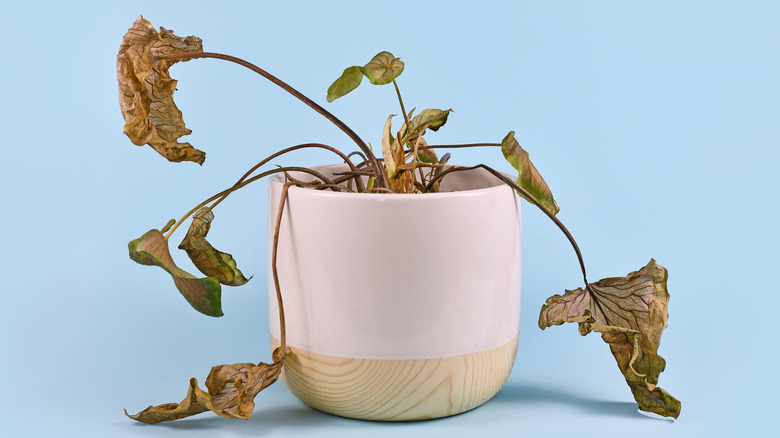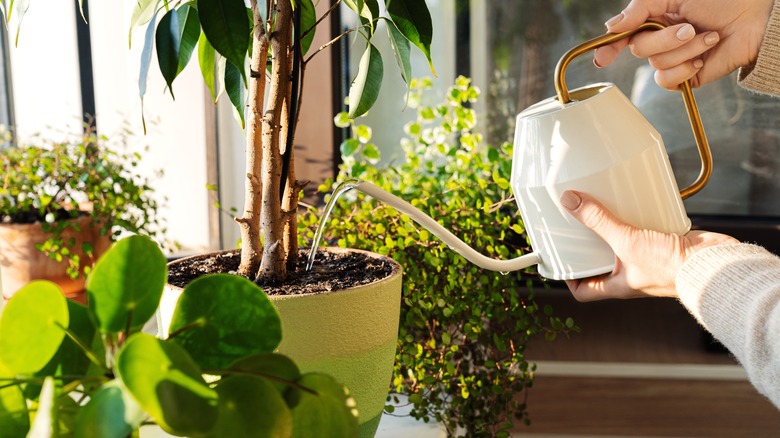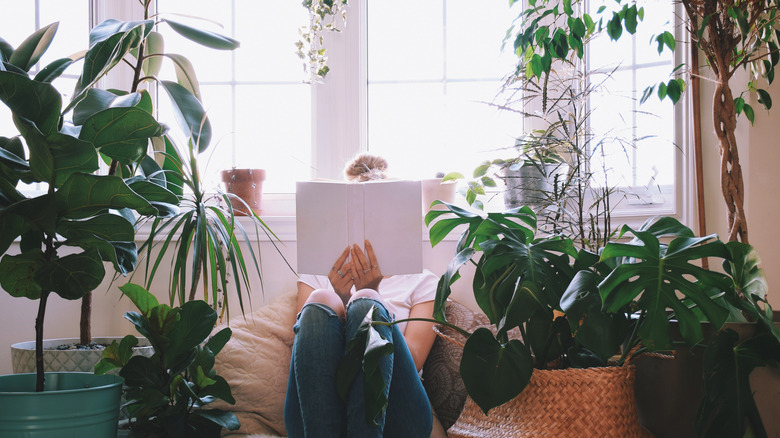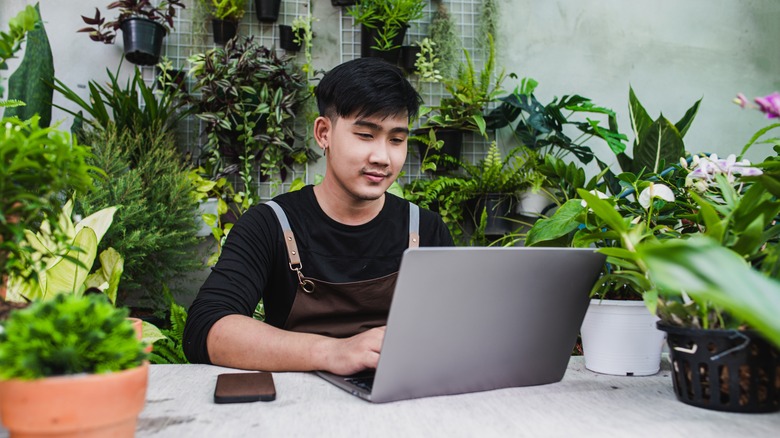3 Things You're Doing That Are Killing Your Houseplants
Growing houseplants is a popular hobby that people around the world find fulfilling. This activity has many advantages for us, including reducing our stress levels, boosting our productivity, and some plants even clear toxins out of the air, as explained by Healthline. However, we can't obtain any of these benefits if we can't keep our houseplants alive. Beginner and experienced gardeners alike can struggle with dying indoor cultivars when they make one or more of these common mistakes.
In order to show off happy, green, and growing plants around your home, you must get to know their needs, your space, and yourself. Each of these factors will affect how well a plant can grow compared to the next one. While your florae may die from one out of hundreds of reasons, by avoiding the three most common ways people kill their plants, you'll likely see more success in your indoor garden.
Overwatering
Overwatering is one of the most common ways of accidentally killing your plants, as per The Seattle Times. Most indoor cultivars are quite drought-tolerant, particularly succulents, cacti, and florae native to hot or arid regions. Unfortunately, new houseplant owners tend to give their new babies a little too much attention by watering them every few days or even daily. Very few plants need to be watered every single day. In fact, most need to be watered once per week or less.
One fool-proof technique for figuring out when to water your plants is to stick your finger into their soil. Push your finger about 2 inches deep into the dirt and pull it out. If you notice wet dirt sticking to you, the plant should not need watering. If the dirt is dry, you can probably give it a drink. However, many plants have different care instructions; some should be watered when the top inch of soil is dry, while others need to dry out before being completely watered again. Always research your plant's watering needs to learn the correct way to care for it.
Choosing the wrong plants for your space
If you don't want your new plant to die, you need to consider your space before buying anything. The light, temperature, airflow, and size of your room are crucial factors playing a role in its lifespan, Our Green Sanctuary explains. Light may be the most important of them all. Different house plants require different types of light. For example, you wouldn't grow carnations in the shade, and you wouldn't grow primrose in full sun. So you should determine how much brightness your room gets before picking out your plant.
Temperature, airflow, and size are just slightly less important. However, you should certainly still note them. Tropical plants will need higher temperatures, more humidity, and less airflow, while other florae may need the opposite. The size of your room can affect the temperature and airflow, but it's also important to note how large the plant you choose may get. Certain houseplants can outgrow their space very quickly. Plan for their maximum height before introducing them into your home.
Not researching your plants
The best way to keep your favorite plants alive is to research, research, research. Each plant you bring home will have slightly different needs that will be necessary to meet for their survival. A few of the care requirements you will want to know about right away, along with temperature, humidity, light, and water, as described by the University of Georgia Extension, include fertilization, soil type, and learning how to spot an unhealthy plant.
Later, it would be beneficial to you and your plant to learn more about the correct way to repot it, how to select a container, and how to prune and clean it. However, when you are serious about successfully growing a new indoor plant, there is no such thing as too much research. While many houseplants are simple to grow and require little attention, the smallest thing can ruin your progress if you don't know what to look for.




